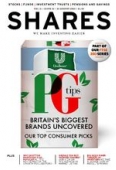Archived article
Please note that tax, investment, pension and ISA rules can change and the information and any views contained in this article may now be inaccurate.
Could high yield bonds be an answer to market volatility?

Bonds are often seen as an answer at times of market stress and, with the FTSE 100 losing more than 6% of its value since the beginning of August there is plenty of reason for people to be seeking safe havens.
But the trouble is everyone has this idea, which means yields on the so-called ‘safest bonds’, such as government ones like some shorter-dated US Treasuries and UK Gilts, have now turned negative. In other words, you’re paying the government for the privilege of giving them money.
HIGH YIELD BONDS THROUGH ETFS
One way to avoid this scenario, and to still get potentially less risk than shares, is through high yield bonds.
These tend not to be government bonds, but rather bonds issued by companies, known as corporate bonds, and always have a credit rating below BBB.
As always with anything that’s not so easy to invest in otherwise, exchange-traded funds (ETFs) provide an accessible way to add high yield bonds to your portfolio.
BMO’s head of ETF management for EMEA, Terry Wood, says the returns on high yield bonds tend to be similar to shares but with lower volatility.
This is because while shares and high yield bonds react in a similar way to market events, when it comes to the income side, returns from high yield bonds have less volatility because the yield investors get from the coupon, i.e. the regular payments investors get for holding the bond, is higher than other bonds or shares, so it provides that extra level of reassurance for investors.
Wood says, ‘High yield bonds had a bad rep from the 80s, but it’s quite a mature market now. And if an issuer defaults, bondholders get paid before common stockholders. There may be a haircut to it, but you still get the coupon too.’
REMEMBER THE RISKS
However, one of the world’s biggest players in the ETF space, Vanguard, is not as keen and believes higher quality bonds, called investment grade, might be best for investors looking to add fixed income, i.e. bonds, to their portfolio.
James Norton, a senior investment planner at Vanguard, says, ‘The primary role of fixed income in a portfolio is to reduce risk. High quality fixed income tends to perform well when equities perform badly, acting as a buffer in falling markets.
‘High yield fixed income is further up the risk spectrum and has more equity like characteristic both in terms of risk and return.
‘So in periods when markets are falling investors should not expect high yield to protect them in the same way higher quality fixed income would, and be prepared that it is more likely to fall in line with equities.’
LOWER CREDIT RATING
Of course having a lower credit rating means high yields bonds do have more risk, and in times when there’s an economic downturn, the number of firms that default on their debt could spike as lower earnings mean they could run out of cash to pay bondholders.
Defaulting is always a last resort for companies, because once they do that, their chances of getting people lend them money in future is practically zilch.
And the income element of such bonds, via the coupon paid to investors, means despite getting sold off with shares when markets go down, they will still tend to be less volatile.
For those looking to add high yield to their portfolio, here are a couple of possible options.
TOP HIGH YIELD BOND ETFS
BMO Barclays Global High Yield Bond ETF (GBPH)
On AJ Bell’s Favourite funds list, this ETF seeks to replicate the performance of the Bloomberg Barclays Global High Yield Bond Corporate Very Liquid ex-144A Hedged to GBP Index, which is a broad-based measure of global high yield corporate bonds and, as it says on the tin, is very liquid.
Holding bonds from the likes of Netflix, Barclays and T-Mobile, the ETF is comprised of 500 bonds in total across a wide range of industries.
The ETF is also hedged back to sterling, which ensures its performance is not affected by any currency fluctuations.
It has returned 3.75% a year over the past three years, has an attractive dividend yield of 4.78% and a relatively low cost of 0.35% per annum.
iShares Fallen Angels High Yield Corporate Bond ETF (WIGG)
This ETF invests in so-called ‘fallen angels’, bonds that were once considered investment grade, i.e. relatively safe, but have since fallen to ‘junk’ status due to a decline in the issuer’s credit rating.
It follows the Barclays Global Corporate ex EM Fallen Angels 3% Issuer Capped Index, which includes bonds from companies that were once rated investment grade but have since fallen into the high yield category.
The index has an added layer of security though in that it excludes companies from emerging markets, only tracking the bonds issued by companies in developed countries.
While more expensive than the BMO ETF with a total cost of 0.55% a year, it has returned 10.29% so far in 2019 and also has a good 12-month yield of 4.72%.
Important information:
These articles are provided by Shares magazine which is published by AJ Bell Media, a part of AJ Bell. Shares is not written by AJ Bell.
Shares is provided for your general information and use and is not a personal recommendation to invest. It is not intended to be relied upon by you in making or not making any investment decisions. The investments referred to in these articles will not be suitable for all investors. If in doubt please seek appropriate independent financial advice.
Investors acting on the information in these articles do so at their own risk and AJ Bell Media and its staff do not accept liability for losses suffered by investors as a result of their investment decisions.

 magazine
magazine









